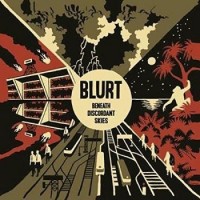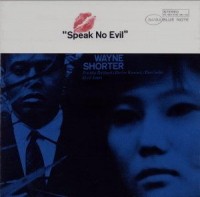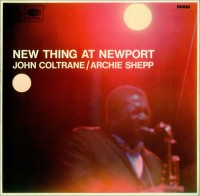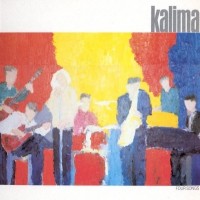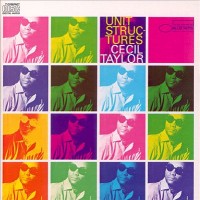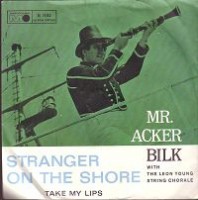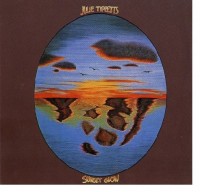
Sunset Glow came to my attention in the ’90s when underground-rock musician Bob Bannister of Tono Bungay mentioned in some zine that it was his favorite album of all time. That recommendation spurred me to search for the British soul vocalist’s debut LP, which I’ve only been able to find on CD. (Tip: A label could make a nice chunk of change with a vinyl repress of Sunset Glow.)
Previously Tippetts had sung with Brian Auger’s dynamite soul-jazz group the Trinity and had some success with their epic cover of Donovan’s “Season Of The Witch.” (Who didn’t back then?) With Auger, Tippetts—then known as Julie Driscoll; she changed her name when she married prog-rock keyboardist Keith Tippett—belted her numbers with flamboyant bravado and soulful throatiness. She has a voice you remember and savor. Its passion and timbre suggests she lives life to the fullest, and then some. So it’s somewhat of a surprise to dip into the aptly titled Sunset Glow and encounter a suite of seven songs that confront you on much more intimate and poised terms—although if you’re familiar with Driscoll’s superb 1969 album from ’71, the shock’s not quite so strong. In fact, they make wonderful companion pieces in her catalog.
Sunset Glow‘s opening song, “Mind Of A Child,” is a slow-blooming flower of summertime soul balladry that stands up with the best of your Joni Mitchells, Margo Guryans, and Linda Perhacses. You say “YES!” to it within a minute, and revel in its pensive bombast, if you have any damn sensitivity in you at all. “Oceans And Sky (And Questions Why?)” approaches a Linda and Sonny Sharrock-ian level of astral-jazz levitation and chaos. The title track carries a wandering, woebegone air that’s tempered with hints of optimism; one hears similarities here to Tim Buckley at his most oceanically amorphous.
“Lilies” and “What Is Living” find Tippetts in sublime mantric mode, singing in her most dulcet timbre and as if in a trance. You feel as if she and the band are slyly luring you into a slow vortex of sensuality and existentialism. The latter’s lyrics—“What is living—if you can’t live to love?/What is living—if you can’t love to give?/What is living—if you can’t give everything?/What is everything—if it’s not living?”—possess a satisfying circularity and humble wisdom. The final track, “Behind The Eyes (For A Friend, R),” is just Tippetts singing and playing piano in a tender, gorgeous tribute to the recently paralyzed Robert Wyatt. What a classy finale.
Tippetts enlisted a crack band of Canterbury prog musicians to help her realize her special vision, including her husband, various Soft Machine and Centipede members, and South African drummer Louis Moholo. They manifested an apotheosis of artful folk jazz that could almost be viewed as the British version of Tim Buckley’s Lorca. Yeah, it’s that sublime. -Buckley Mayfield


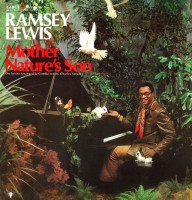
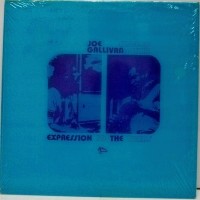
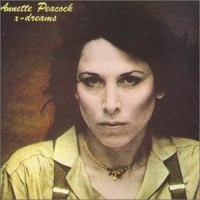
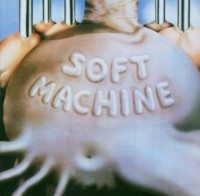
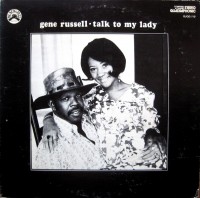
 Gene Russell himself made the recordings on Black Jazz happen. His best known album “Talk To My Lady” was self-released via the label and prior to that he had one obscurity lost in the shuffle from Decca. “Talk To My Lady” features a very interesting rework of “My Favorite Things” that alone is worth the price of admission…
Gene Russell himself made the recordings on Black Jazz happen. His best known album “Talk To My Lady” was self-released via the label and prior to that he had one obscurity lost in the shuffle from Decca. “Talk To My Lady” features a very interesting rework of “My Favorite Things” that alone is worth the price of admission…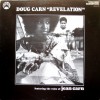 Doug Carn was most prolific for the Oakland label in the early 70s, putting out a release typically once a year. A principal funk and soul player back in the day, his style of jazz-funk was spacey but starkly recorded in contrast to Herbie’s sci-fi releases. Theo’s compilation features his infectious “Trance Dance” track, miles away from his earlier work with Earth Wind and Fire.
Doug Carn was most prolific for the Oakland label in the early 70s, putting out a release typically once a year. A principal funk and soul player back in the day, his style of jazz-funk was spacey but starkly recorded in contrast to Herbie’s sci-fi releases. Theo’s compilation features his infectious “Trance Dance” track, miles away from his earlier work with Earth Wind and Fire.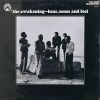 The Awakening produced little but left a big impression in the way that reminds one of the Art Ensemble rhythm section, but not so much Roscoe or Lester, more like a conventional modal horn and reed format. Their work could move from tight and funky to cool. Only two albums were released by Black Jazz before they dissipated.
The Awakening produced little but left a big impression in the way that reminds one of the Art Ensemble rhythm section, but not so much Roscoe or Lester, more like a conventional modal horn and reed format. Their work could move from tight and funky to cool. Only two albums were released by Black Jazz before they dissipated.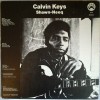 Calvin Keys is a real heavy hitter from Omaha, Nebraska. As a jazz guitarist he has lent his talents to Ray Charles, Ahmad Jamal, Joe Henderson, Sonny Stitt, and later even M.C. Hammer! His playing is the least free but with plenty of flaying, and he’s confidently subtle in swing. Washes of cymbal crashes are a perfect foil for his pristine R&B spillage.
Calvin Keys is a real heavy hitter from Omaha, Nebraska. As a jazz guitarist he has lent his talents to Ray Charles, Ahmad Jamal, Joe Henderson, Sonny Stitt, and later even M.C. Hammer! His playing is the least free but with plenty of flaying, and he’s confidently subtle in swing. Washes of cymbal crashes are a perfect foil for his pristine R&B spillage.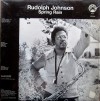 Rudolph Johnson was also a Ray Charles acolyte who made a name for himself as a solid and dedicated tenor sax player. He was virtually unknown outside his crowd in Oakland, where he recorded two Black Jazz LPs. Talented in equal measure, pianist John Barnes and drummer Ray Pounds helped Johnson create maybe the most conventional but tempered music on the label.
Rudolph Johnson was also a Ray Charles acolyte who made a name for himself as a solid and dedicated tenor sax player. He was virtually unknown outside his crowd in Oakland, where he recorded two Black Jazz LPs. Talented in equal measure, pianist John Barnes and drummer Ray Pounds helped Johnson create maybe the most conventional but tempered music on the label.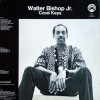 Walter Bishop Jr. may have the highest rep, having played with Charlie Parker, Art Blakey and Stan Getz, but he only managed to put out one album as leader for Black Jazz. One turns out to be enough however: the ever desirable jazz flute is all over this LP, and an unexpected Latin influence presides. That makes it a unique release from this label already on the peripheral.
Walter Bishop Jr. may have the highest rep, having played with Charlie Parker, Art Blakey and Stan Getz, but he only managed to put out one album as leader for Black Jazz. One turns out to be enough however: the ever desirable jazz flute is all over this LP, and an unexpected Latin influence presides. That makes it a unique release from this label already on the peripheral.